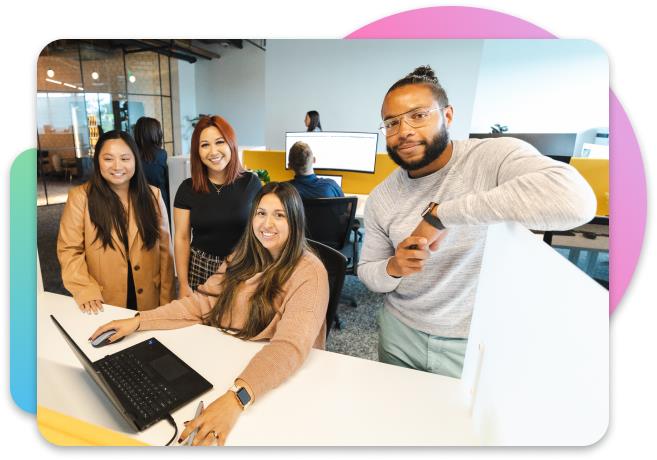More Than a Third of U.S. Workers Fear AI: Addressing Concerns
May 6, 2024

Over a third of U.S. workers are casting nervous glances at their AI-powered devices, and it's no wonder—36% fear AI might take their jobs, according to a YouGov study.
What’s more, a majority of workers fear that AI advancements will lead to decreased job opportunities, reduced hours, and lower pay.
Who can blame them? If you've ever sat on the edge of your seat watching I, Robot or Terminator, you're probably not just worried about your job security but also about a full-blown robot apocalypse.
As an HR professional or company leader, it's a challenge to navigate these feelings of fear, unease, and distrust. Here are three proactive steps you can take to alleviate these anxieties and prepare your employees to embrace AI’s potential.
Quick Overview:
3 Steps to Help Your Employees Embrace AI
#1 Education and Training
Fear often stems from misunderstanding. Many workers express concerns because they lack a clear understanding of how AI works and its impact on their roles. By providing targeted training programs covering topics such as AI technologies, applications in the workplace, and collaboration strategies, employers can equip their workforce with the necessary skills to adapt and thrive in an AI-driven environment. Investing in education and training demonstrates a commitment to supporting the workforce through the transition to an AI-enabled workplace, boosting morale and productivity.
How We Do It:
TCWGlobal hosted an AI Lunch and Learn for our internal workers where we covered general AI, generative AI, and implementation of AI. Within that, the audience learned what AI is, how AI learns, and use cases of AI. We spotlighted chatbots with a live demo. We made sure to touch on the dangers and shortcomings of AI, including generative chatbots like ChatGPT, and best practices for using ChatGPT.
#2 Emphasize Human-AI Collaboration
It's crucial to communicate that AI isn’t here to replace human workers but to augment their capabilities. Employers should emphasize that the goal is human-AI collaboration, where AI systems work alongside employees to enhance productivity, efficiency, and innovation. By framing AI as a tool to assist and support human workers, companies can help alleviate fears of job displacement and foster a culture of collaboration and teamwork.
How We Do It:
At TCWGlobal, we understand the importance of human-AI collaboration. That’s why we have a dedicated team, Apollo, focused on process improvement, AI, automation, and technological alignment. Apollo emphasizes to the TCWGlobal family that our goal is to remove items from your workday that don’t make the most of your unique skills and strengths – processes that can be easily automated – so that more of your time and energy can go toward activities that require your skills, like old fashioned customer service.
Pro Tip: Remind your workers that they possess unique strengths, such as creativity, empathy, and critical thinking, that can’t be replaced by AI. With this affirmation, your employees will believe you when you say AI is only meant to enhance their work life, not displace their job entirely.
.png?width=740&height=740&name=1%20(1).png)
#3 Address Ethical and Privacy Concerns
Many workers fear AI due to concerns about privacy, data security, and ethical implications. Employers must prioritize transparency and accountability when implementing AI systems in the workplace. This includes establishing clear guidelines for data usage, ensuring compliance with relevant regulations (such as GDPR and CCPA), and implementing robust security measures to protect sensitive information.
How We Do It:
TCWGlobal has gone the extra step by writing out a corporate code of ethics for AI usage. By proactively and openly communicating about your guidelines for data and AI usage, you foster a culture of trust and accountability that will pave the way for successful AI integration.
Empower Your Workforce
Tacking employees' fears about AI requires proactive measures such as education and training, emphasizing human-AI collaboration, and addressing ethical and privacy concerns. By prioritizing these initiatives, employers can empower their workforce to adapt and thrive in an AI-driven workplace while fostering a culture of trust and innovation.
Looking for more ways to empower your workforce and increase productivity? Check out our impressive list of services here!
